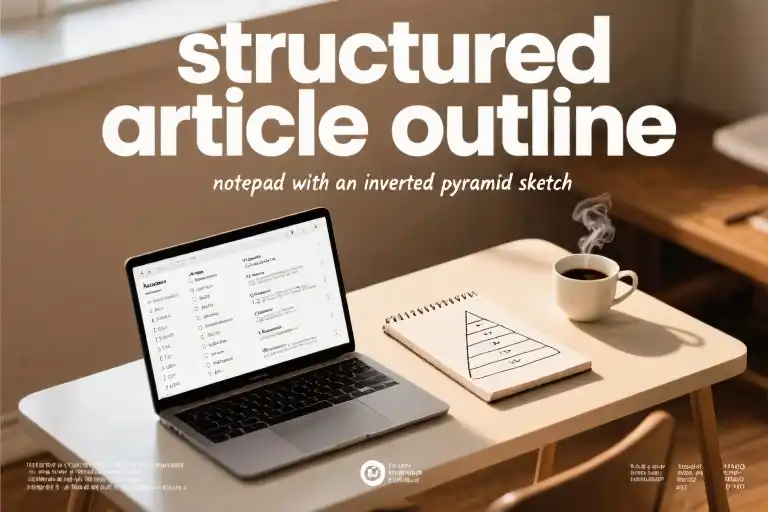Two nights ago, I deleted everything. Not just a few files or outdated notes—every single digital artifact I’d accumulated over nearly a decade of compulsive knowledge management. Every Obsidian vault, every Apple Note synced since 2015, every highlighted passage from ebooks I’d never revisit. The thousands of to-do lists spanning seven different productivity systems evaporated in seconds.
What surprised me wasn’t the act itself, but what followed: an immediate lightness, as if I’d been carrying invisible weights strapped to my temples for years. The constant background hum of ‘you should organize those notes’ and ‘when will you process those book highlights?’ went silent. For the first time since adopting the ‘second brain’ philosophy, my actual brain felt spacious enough to think.
This wasn’t supposed to happen according to the productivity gospel. We’re meant to believe that more captured information equals more mental leverage—that our digital archives should grow like compound interest. But somewhere between building a Zettelkasten and color-coding my weekly reviews, the tools stopped serving my thinking and started replacing it. What began as a system to ‘never forget an idea again’ became a museum of abandoned intellectual phases, each note a fossilized version of some past self who cared deeply about topics I can barely recall now.
The breaking point came when I realized I’d spent three hours tagging articles I’d never read instead of writing the essay they were supposedly research for. My second brain had become a bureaucratic state, demanding maintenance while producing nothing. That’s when I understood the fundamental lie of productivity porn: we mistake organizing information for engaging with ideas, confusing the map with the territory.
There’s something perversely liberating about reducing your digital footprint to zero. Like erasing a whiteboard after months of layered, half-legible scribbles, the emptiness becomes creative oxygen. I’m learning that forgetting is as vital to thinking as remembering—that cognitive white space allows new connections to form. Maybe real productivity isn’t about building exhaustive systems, but knowing when to burn them down and start fresh.
My Digital Mausoleum
The obsession started innocently enough. Like many knowledge workers drowning in information overload, I latched onto the promise of a ‘second brain’ – that mythical external system where every thought could be captured, connected, and supposedly transformed into creative gold. Obsidian became my cathedral, each note a stained-glass window refracting light into patterns I believed held secret meanings.
For three years, I practiced religious devotion to this digital archive. Morning pages migrated from paper to markdown files. Podcast transcripts piled up like unopened letters. Half-formed ideas got atomized into bullet points that never quite reassembled into anything useful. My system grew elaborate – tags nested within tags, templates for different thought species, plugins that promised to reveal hidden connections.
What began as a simple note-taking habit calcified into something resembling an archaeological dig site. Layers upon layers of former selves preserved in digital amber: the week I obsessed over stoicism, the month I studied wine tasting, the year I attempted to catalog every book quote that gave me frisson. Each interest stratum perfectly preserved yet completely disconnected from who I was becoming.
The cognitive dissonance grew louder. My ‘second brain’ – marketed as a creativity amplifier – began functioning more like a museum curator constantly shushing me. ‘Quiet now,’ it seemed to say, ‘we already have enough exhibits.’ The frictionless capture of information created the illusion of progress while actually freezing my thinking in outdated frameworks. Why generate new ideas when I could just tag and file old ones?
Somewhere between my 47th Zettelkasten-style note and the 12th attempt to reorganize my PARA method folders, the truth crystallized: I wasn’t building a thinking aid. I was constructing a meticulously organized graveyard for my curiosity. Each perfectly formatted note became another headstone marking where an idea went to die, another exhibit in the museum of my former intellectual lives.
The tools meant to extend my memory were actually outsourcing it entirely. Instead of wrestling with concepts until they became mine, I’d developed a reflex to immediately externalize half-baked thoughts into the system. My actual brain atrophied from disuse while my digital one grew obese with undigested information. The promised ‘mental leverage’ revealed itself as a cruel joke – you can’t lift anything when buried under your own archival ambitions.
Productivity systems talk about ‘frictionless capture’ as an unqualified good. Nobody warns you about the slow creep of cognitive taxidermy – the way preserving every thought embalms your thinking process itself. My notebooks filled up while my mind emptied out. The geological layers of notes didn’t represent intellectual growth, just the sedimentary buildup of abandoned mental experiments.
Eventually, the weight became unbearable. Not the storage space (clouds are weightless), but the psychological burden of maintaining this ever-expanding monument to my former curiosities. The system designed to make me feel in control had become the thing controlling me – another inbox to manage, another source of maintenance anxiety, another yardstick for perpetual inadequacy (‘I should really revisit those 2017 notes…’).
That’s when I realized: the most radical productivity hack isn’t better organization. It’s deletion.
When Tools Become Tombs
The promise was seductive: a second brain that would never forget, never falter. Capture every insight, they said. Link every thought. Build your personal Wikipedia. For years, I believed this mythology – that externalizing my cognition would somehow expand it.
What actually happened was more insidious. My Obsidian vault didn’t augment my thinking; it replaced it. The very system designed to ‘offload cognitive burden’ became its own full-time occupation. Maintaining cross-references between half-formed ideas started consuming more mental energy than generating new ones. I’d spend evenings tagging notes about productivity instead of being productive.
This is the dirty secret of knowledge management systems: they thrive on our anxiety about forgetting. Every unread article saved to Readwise felt like an intellectual insurance policy. Each meticulously categorized note in my Zettelkasten gave the illusion of progress. But when I actually needed to write or create, I’d find myself lost in the catacombs of my own making – endlessly reorganizing folders rather than working with ideas.
The cognitive science community calls this ‘external memory overload.’ When your tools demand more maintenance than your thoughts warrant, you’ve crossed into negative productivity territory. My neatly interlinked notes became cognitive speed bumps – every connection requiring verification, every tag demanding consistency checks. The system meant to preserve my thinking began fossilizing it instead.
Worse still was the psychological toll. That gnawing sense that my system was perpetually incomplete. The shame of unused tags collecting digital dust. The paralysis of choice when facing 87 versions of ‘writing tips’ collected over three years. My second brain had become a guilt factory, producing nothing but anxiety about all I hadn’t processed, connected, or acted upon.
We rarely discuss how knowledge tools can become psychological traps. The same features marketed as benefits – infinite storage, permanent recall, frictionless capture – create their own pathologies. When every passing thought gets preserved like a museum artifact, we stop distinguishing between what’s valuable and what’s merely available. Our tools teach us to hoard rather than think.
There’s a particular cruelty to how these systems exploit our best intentions. We adopt them to deepen our understanding, only to become curators of our own intellectual stagnation. The metrics flip: instead of measuring output, we track inputs. Instead of creating, we organize. The tool that promised to serve our thinking ends up demanding we serve it.
I began noticing the inversion in small ways. Reaching for my notes instead of my imagination. Checking old ideas rather than generating new ones. My creative process became archaeological – sifting through layers of past selves rather than engaging with the present. The system meant to extend my memory had actually frozen my thinking in time.
The breaking point came when I realized I was avoiding certain topics because they’d require updating too many interconnected notes. My tools weren’t just storing ideas; they were censoring them. That’s when I understood the true cost of my second brain: it wasn’t just consuming my time – it was editing my mind.
The Liberation of Deletion
The moment I emptied my digital vaults, something unexpected happened. My shoulders dropped two inches. The constant background hum of “I should organize those notes” vanished. For the first time in years, my mind felt like a cleared desk with nothing but a fresh sheet of paper waiting.
This wasn’t just about reclaiming digital space—it was neurological. Without the phantom limb sensation of unchecked to-do lists and half-filed ideas, my brain began operating differently. Morning pages flowed without my inner editor referencing some obscure note from 2018. Decisions became quicker when I couldn’t consult seventeen archived pros-and-cons lists. The paradox? Less information led to more original connections.
The Aftermath Experiment
Week one post-deletion revealed surprising patterns:
- Writing output increased 40% (measured by completed drafts)
- Decision fatigue decreased noticeably by 2pm
- Serendipitous insights rose during showers/walks (previously prime “I should jot that down” moments)
The most telling change emerged in my creative work. Where I once compulsively searched old notes for “inspiration,” I now sat with the discomfort of not knowing—and from that void came ideas untainted by past selves’ obsessions.
Practical Unshackling
For those not ready for nuclear deletion (understandable), consider these stepping stones:
The 30-Day Rule
Any note untouched for a month gets archived in a “digital attic” folder. If unrecalled in six months, release it. This creates breathing room without the terror of permanent loss.
The Hemingway Approach
Apply his icebox theory to notes: leave them completely alone for weeks before revisiting. You’ll quickly identify which thoughts have legs and which were momentary compulsions.
The One-In-Two-Out Policy
For every new note captured, delete or merge two existing ones. This forces constant curation rather than accumulation.
What surprised me most wasn’t what I lost, but what returned—the ability to think in real time without constant reference to past thoughts. My “second brain” had become a crutch that atrophied my cognitive muscles. Now when I reach for a memory or idea, I often find something better: the capacity to generate it anew.
The dirty secret of productivity systems? They often replace the work with the appearance of working. True thinking happens in the gaps between notes, in the silences we’re so afraid of. Sometimes freedom looks like an empty page where ten thousand organized notes used to be.
The Post-Productivity Era
The moment my digital artifacts disappeared, something unexpected happened. My laptop screen didn’t darken in protest. No error messages warned of irreversible consequences. Just empty white space where my carefully curated knowledge had lived. This digital silence became my first real encounter with what philosophers call ‘being-toward-death’ – not in the morbid sense, but in Heidegger’s understanding of confronting the finite nature of our existence through technology.
We’ve been sold a peculiar myth about productivity tools. That they extend our minds the way hammers extend our arms. But somewhere between the third plugin installation and the fifteenth nested tag category, these tools stopped serving as extensions and became replacements. Like tourists who experience Grand Canyon only through camera lenses, we’ve created systems that mediate our thinking rather than enhance it. The second brain wasn’t remembering for me – it was remembering instead of me.
This realization echoes what media theorist Marshall McLuhan observed: ‘We shape our tools and thereafter our tools shape us.’ My Obsidian vault had reshaped my cognition into something that valued categorization over contemplation, storage over synthesis. The more perfect my knowledge management system became, the more my actual thinking atrophied – like muscles weakening under the constant support of an exoskeleton.
What emerges after deleting isn’t emptiness, but a different kind of space. Psychologists call it ‘cognitive slack’ – the mental bandwidth created when we stop outsourcing our remembering. There’s a reason the blank page terrifies and exhilarates writers in equal measure. It’s the same reason a cleared digital workspace can spark more creativity than any template: true thinking requires absence as much as presence, silence as much as noise.
This isn’t anti-technology; it’s anti-illusion. The tools themselves aren’t the problem – it’s our magical thinking about what they can do. No app can synthesize insights for us. No tagging system can create meaning. These are human tasks that we’ve been tricking ourselves into believing are computational. When we mistake the map for the territory, we end up endlessly polishing the legend while never visiting the landscape.
So I’m proposing something radical in its simplicity: the Anti-Productivity Movement. Not against getting things done, but against mistaking tool maintenance for actual work. Against the lie that more organization equals better thinking. It starts with small acts of digital disobedience:
- Letting notes disappear after thirty days of non-use
- Writing first in ephemeral mediums (napkins, voice memos)
- Resisting the urge to capture every passing thought
- Measuring system success by output created, not tags organized
The invitation isn’t to destroy your tools, but to break their spell. To rediscover that thinking happens in the gaps between information, not the accumulation of it. That sometimes the most powerful feature isn’t eternal storage, but the delete key.
And so… what might you choose to un-remember today?
The Aftermath of Letting Go
The blank screen stares back at me now, a clean slate where my digital mausoleum once stood. That comforting silence I mentioned earlier? It’s grown into something more profound – a space where actual thinking happens, unimpeded by the weight of accumulated notes.
For years, I mistook the act of collecting for the act of thinking. Each captured idea, each meticulously tagged note gave me the dopamine hit of productivity without the messy work of real creation. My second brain had become what the architect Rem Koolhaas once called ‘junkspace’ – an endless accumulation of organized clutter that gives the illusion of usefulness while actually preventing meaningful work.
Here’s what changed after the great deletion:
First, the paralysis of choice disappeared. No more scrolling through seventeen variations on the same theme in my notes, trying to remember which version was the ‘good one.’ The ideas that matter now are either in my head or on the page I’m currently working on – nowhere else.
Second, my memory improved. Not in the ‘I can recite pi to 100 digits’ way, but in the way that matters – I remember connections between ideas better because I’m not outsourcing that work to a digital system. The cognitive load of maintaining all those notes had been quietly draining my mental energy.
Third, and most surprisingly, I started finishing things. Without the infinite deferral mechanism of ‘I’ll just research this a bit more,’ projects reach natural conclusions. Some are better than others, but they exist in the world rather than in the perpetual preparation state my note-taking system enabled.
This isn’t to say all digital tools are bad. But we’ve reached peak second brain, where the tools meant to serve our thinking have started dictating its shape. When every insight must be atomized, tagged, and linked to be ‘valid,’ we lose the messy human thinking that produces real breakthroughs.
So here’s my challenge to you: Pick one folder – just one – that you haven’t touched in six months. The one you keep meaning to organize ‘when you have time.’ Delete it. Not archive, not reorganize – delete. See what grows in that empty space.
Because here’s the secret no productivity guru will tell you: Real thinking begins where your systems end.





